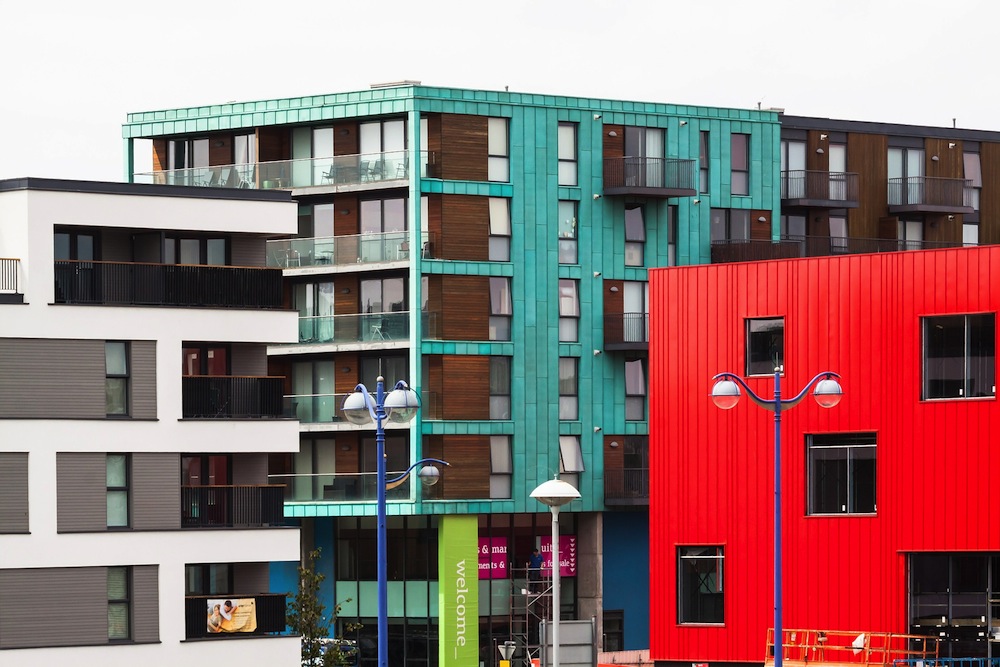The National Council of Architectural Registration Boards (NCARB) has accepted proposals from over a dozen architecture schools to implement an integrated path to licensure within academic programs accredited by the National Architectural Accrediting Board (NAAB).
This initiative allow students enrolled in an NCARB-accepted path to complete the requirements for architectural licensure at the time of graduation. The NCARB Integrated Path initiative invites programs accredited by the NAAB to propose approaches that would result in completing the requirements of the Intern Development Program (IDP) and the opportunity to take each division of the Architect Registration Examination (ARE) before graduation. Passing all ARE divisions prior to graduation is not required.
In its inaugural effort, the NCARB Integrated Path initiative has solicited statements of interest from all schools with NAAB-accredited programs and then invited all with accredited programs to submit proposals, which were received this past June. The review of these proposals was conducted by the NCARB Licensure Task Force (LTF), composed of interns/recently licensed architects, state licensing board members and executives, academic deans and instructors, and non-architect public members, as well as leaders representing the American Institute of Architects (AIA), the American Institute of Architecture Students (AIAS), the Association of Collegiate Schools of Architecture (ACSA), and the National Architectural Accrediting Board (NAAB).
NCARB will respond to each school with feedback as to how their proposal is or could become acceptable before releasing the names of the accepted programs. All programs that submitted proposals will be coached as to next steps including modifications necessary to move forward toward implementation. NCARB will also engage its state licensing board members regarding regulatory changes to allow access to the ARE prior to graduation.
After providing further feedback to the proposing schools, NCARB will release the names of the initial group of accepted programs. Programs needing more development will be encouraged to resubmit proposals utilizing the feedback from the Task Force. A new RFP for the second round of participation will launch in early 2016 and will be repeated on an annual basis, to be managed by a new Integrated Path Evaluation Committee appointed by the NCARB President Ward and include diverse geographic, age, demographic, and collateral perspectives.
Related Stories
| Apr 5, 2011
Are architects falling behind on BIM?
A study by the National Building Specification arm of RIBA Enterprises showed that 43% of architects and others in the industry had still not heard of BIM, let alone started using it. It also found that of the 13% of respondents who were using BIM only a third thought they would be using it for most of their projects in a year’s time.
| Apr 5, 2011
Top 10 Buildings: Women in Architecture
Making selections of top buildings this week led to a surprising discovery about the representation of women in architecture, writes Tom Mallory, COO and co-founder, OpenBuildings.com. He discovered that finding female-created architecture, when excluding husband/wife teams, is extremely difficult and often the only work he came across was akin to interior design.
| Apr 5, 2011
What do Chengdu, Lagos, and Chicago have in common?
They’re all “world middleweight cities” that are likely to become regional megacities (10 million people) by 2025—along with Dongguan, Guangzhou, Hangzhou, Shenzhen, Tianjin, and Wuhan (China); Kinshasa (Democratic Republic of the Congo); Jakarta (Indonesia); Lahore (Pakistan); and Chennai (India), according to a new report from McKinsey Global Institute: “Urban World: Mapping the economic power of cities”.
| Mar 30, 2011
China's low-carbon future city
In 2005, the Chinese government announced its target to reduce energy consumption per GDP unit by 20% by the year 2010. After a multi-billion investment, that target has been reached. The Chinese Climate Protection Program’s goal to increase energy efficiency, develop renewable energies, and promote energy savings while reducing pollutant emissions and strengthening environmental protection is reflected in the “Future City” by SBA Design.









